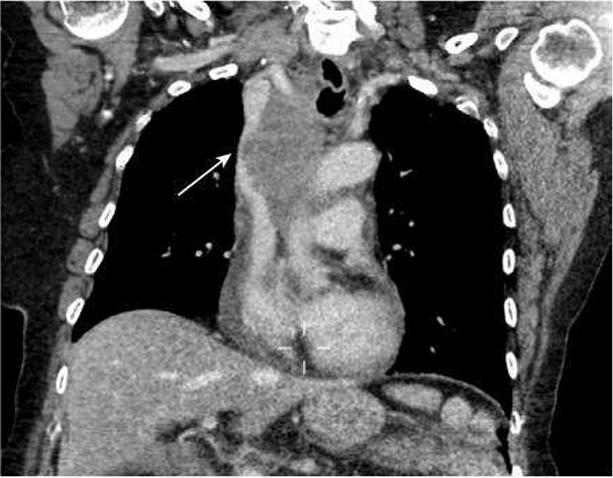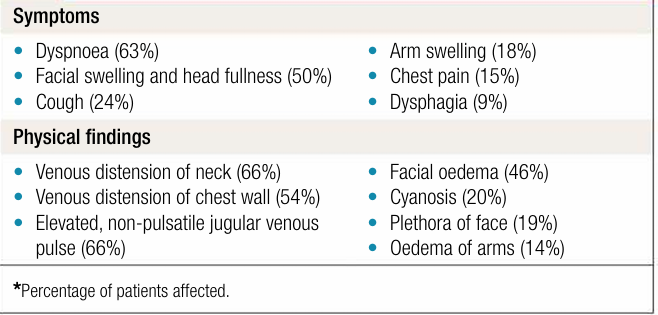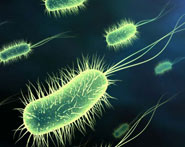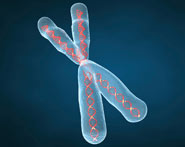


 النبات
النبات
 الحيوان
الحيوان
 الأحياء المجهرية
الأحياء المجهرية
 علم الأمراض
علم الأمراض
 التقانة الإحيائية
التقانة الإحيائية
 التقنية الحيوية المكروبية
التقنية الحيوية المكروبية
 التقنية الحياتية النانوية
التقنية الحياتية النانوية
 علم الأجنة
علم الأجنة
 الأحياء الجزيئي
الأحياء الجزيئي
 علم وظائف الأعضاء
علم وظائف الأعضاء
 الغدد
الغدد
 المضادات الحيوية
المضادات الحيوية|
Read More
Date: 19-2-2016
Date: 19-2-2016
Date: 2025-02-05
|
Superior vena cava obstruction (SVCO) is a common complication of cancer that can occur through extrinsic compression or intravascular blockage. The most common causes of extrinsic compression are lung cancer, lymphoma and metastatic tumours (Fig. 1). Patients with cancer can also develop SVCO due to intravascular blockage in association with a central catheter or thromboembolism secondary to the tumour.

fig1. Computed tomography (CT) image of extrinsic compression of the superior vena cava by a small cell lung cancer (arrow) performed as part of investigations for an acute presentation of cancer.
Clinical features
The classical presentation is with breathlessness, oedema of the arms and face, distended neck and arm veins and dusky skin coloration over the chest, arms and face. Collateral vessels may develop over a period of weeks and the flow of blood in the collaterals helps to confirm the diagnosis. Headache secondary to cerebral oedema arising from the back flow pressure may also occur and tends to be aggravated by bending forwards, stooping or lying down. The severity of symptoms is related to the rate of obstruction and the development of a venous collateral circulation. Accordingly, symptoms may develop rapidly or gradually. Clinical features are summarised in Box 1.

Box1. Common symptoms and physical findings in superior vena cava obstruction*
Investigations and management
The investigation of choice is a CT scan of the thorax to confirm the diagnosis and distinguish between extra- and intravascular causes.
A biopsy should be obtained when the tumour type is unknown because tumour type has a major influence on treatment. CT of the head may be indicated if cerebral oedema is suspected. Tumours that are exquisitely sensitive to cytotoxic chemotherapy, such as germ cell tumours and lymphoma, can be treated with cytotoxic chemotherapy alone. For most other patients with symptomatic SVCO, SVC stenting provides the best outcomes although mediastinal radiotherapy may also be considered. Where possible, these measures should be followed by treatment of the primary tumour, as long-term outcome is strongly dependent on the prognosis of the underlying cancer.



|
|
|
|
دراسة: الفطر سلاح فعال ضد الإنفلونزا
|
|
|
|
|
|
|
حدث فلكي نادر.. عطارد ينضم للكواكب المرئية بالعين المجردة
|
|
|
|
|
|
|
خلال شهر رمضان.. العتبة العباسية المقدسة تستعد لإقامة أنشطة دينية وثقافية في باكستان
|
|
|